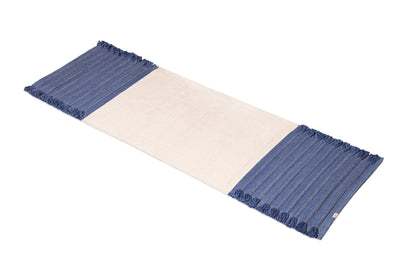Meditation Room Style Tips: Incorporating Vastu Shastra and Ayurveda
Creating a serene and functional meditation room is crucial for enhancing your meditation practice. The right environment can make all the difference, providing a sanctuary where you can truly relax and focus. Incorporating Vastu Shastra and Ayurveda principles can further enhance your meditation space's positive energy and overall wellness.
What is Vastu Shastra?
Vastu Shastra is an ancient Indian science of architecture and design that guides the construction and layout of buildings to harmonize with the natural forces of the universe.
Much like Ayurveda, Vastu Shastra is also rooted in the Vedas, the ancient sacred texts of India. Vastu Shastra emphasizes the importance of balance and alignment with the five elements—earth, water, fire, air, and space—to create spaces that promote health, wealth, and happiness. Ayurveda also considers the influence of the environment on well-being, making it complementary to Vastu Shastra in creating a harmonious meditation space.
Choosing the Right Space

Selecting a quiet and secluded area in your home is essential for a meditation room. According to Vastu Shastra, the northeast corner of the house is ideal for meditation, as it is associated with positive energy and tranquility. Ayurveda recommends spaces with good airflow and natural light to enhance prana (life force). Look for a space with natural light and good ventilation, which can create a more inviting and calming atmosphere. Consider the size and shape of the room; it doesn't need to be large, but it should feel spacious and free from distractions.
Essential Elements for a Meditation Room

- Comfortable Seating: Invest in quality cushions, mats, or chairs to ensure comfort during meditation sessions. Place them in the northeast direction to align with Vastu principles. Ayurveda suggests using natural materials like cotton or wool for seating to balance doshas (body energies).
Bennd has a variety of shapes and sizes to fully support your body in all types of meditation. Handcrafted with 100% ethically sourced raw organic cotton that is medicinally dyed in our exclusive formula consisting of 22 different Ayurvedic herb and medicines. The pillow is filled with organic buckwheat hulls for amazing support + lavender and chamomile to help keep you calm and peaceful while meditating.
- Natural Elements: Incorporate plants, water features, or natural materials to bring a sense of peace and connection to nature. According to Vastu, keeping a water fountain or a small aquarium in the northeast can enhance positive energy flow. Ayurveda recommends using indoor plants known for their air-purifying qualities.
- Calming Colors and Textures: Use soft, neutral tones and gentle textures to create a soothing environment. Vastu Shastra recommends using light colors such as white, light blue, or green to promote tranquility. Ayurveda emphasizes colors that balance your dominant dosha: cool colors for Pitta, warm colors for Vata, and bright colors for Kapha.
Personalizing Your Space

- Add Personal Touches: Include artwork, spiritual symbols, or personal items that resonate with you and enhance your sense of peace. Vastu suggests placing spiritual symbols or idols in the northeast direction for positive vibrations. Ayurveda encourages the use of symbols and objects that align with your personal energy and bring joy.
- Keep It Clutter-Free: A tidy space promotes a clear mind. Use storage solutions to keep the area organized. According to Vastu, clutter can obstruct the flow of positive energy, so keeping the space clean is essential. Ayurveda also supports a clutter-free environment to reduce mental stress.
- Scents and Sounds: Introduce incense, essential oils, or soft music to elevate the sensory experience of your meditation practice. Vastu Shastra advocates for the use of natural fragrances and calming sounds to enhance the ambiance. Ayurveda recommends using specific essential oils to balance your doshas, such as lavender for Vata, sandalwood for Pitta, and eucalyptus for Kapha.
Practical Tips for Interior Designers
- Understand the Client's Needs: Be in tune with your clients' energies and meditation styles, this will help you align with their needs effortlessly. Incorporating Vastu Shastra and Ayurveda can add an extra layer of harmony and positive energy to their space.
- Balance Aesthetics with Functionality: Ensure that the room is not only beautiful but also serves its purpose effectively. Use Vastu principles to guide the placement of elements for optimal energy flow and Ayurveda principles to create a balanced environment.
- Stay Updated with Trends: Keep abreast of current trends in the yoga meditation space to offer fresh and inspiring ideas. Combining modern design with Vastu Shastra and Ayurveda can create a unique and balanced space.
A well-designed meditation room can significantly enhance your meditation practice. By carefully selecting and arranging elements that promote peace and relaxation, and incorporating Vastu Shastra and Ayurveda principles, you can create a sanctuary that supports your journey inward. Embrace the process and enjoy the benefits of meditating in a thoughtfully designed space infused with positive energy and holistic wellness.














